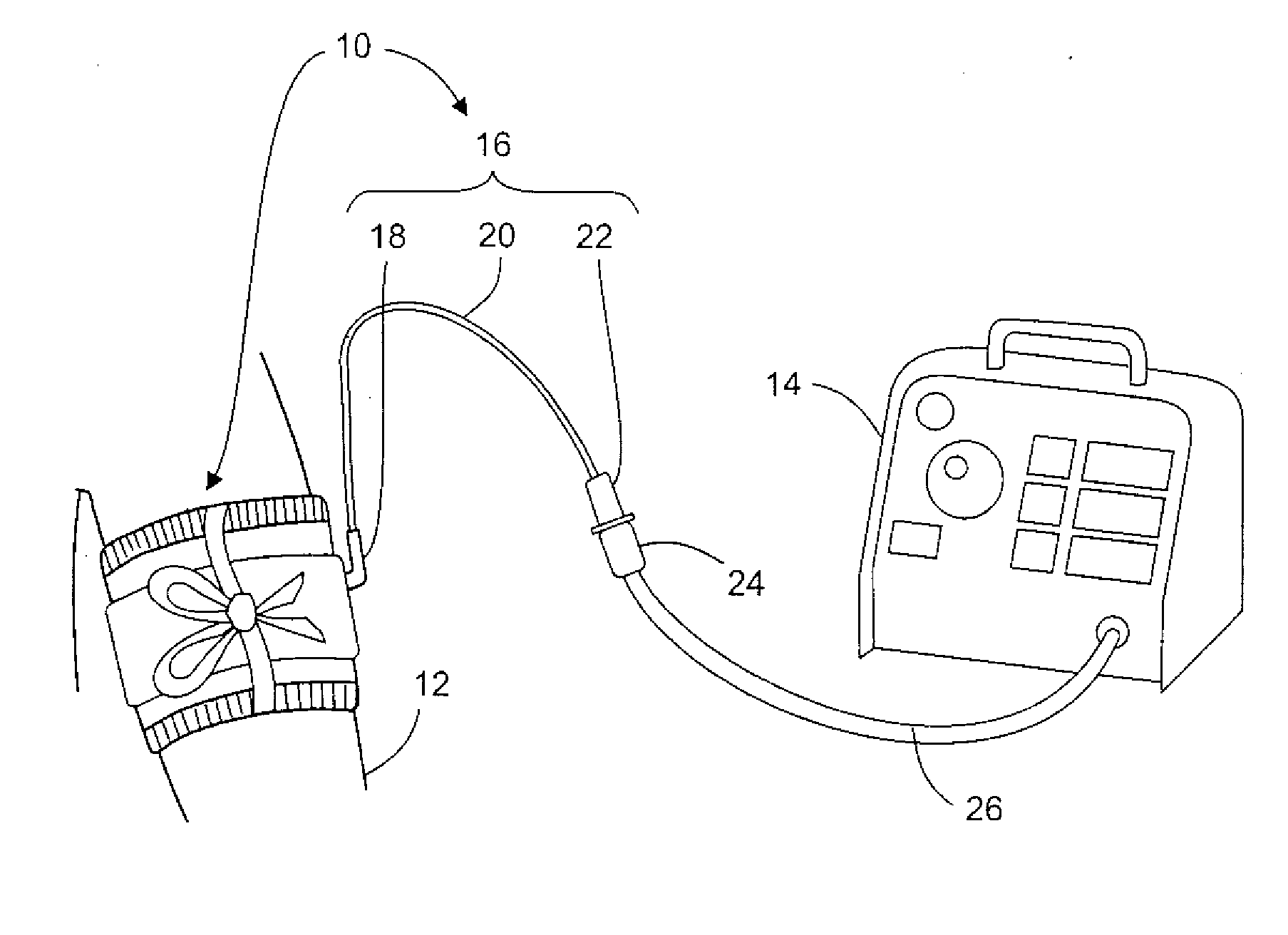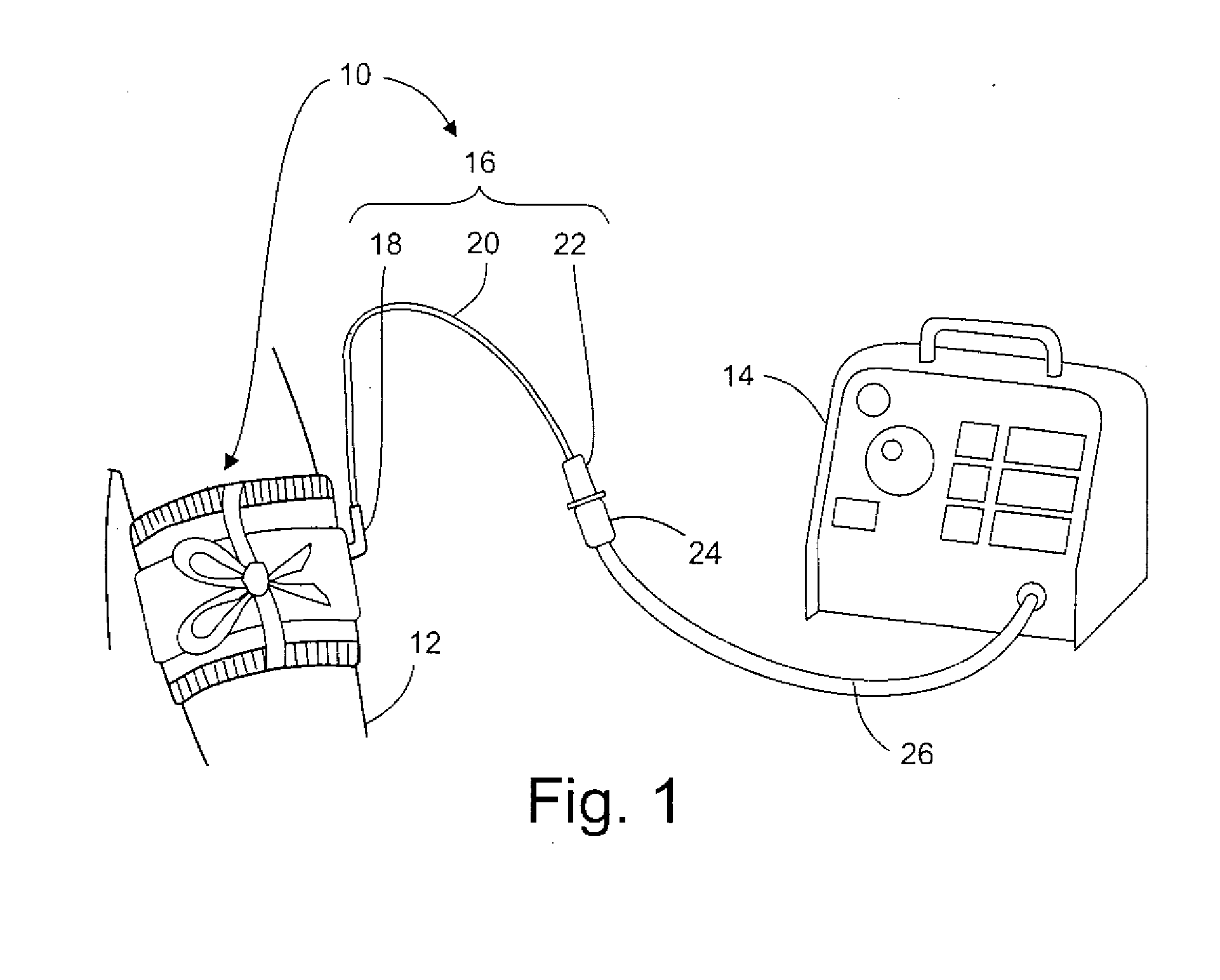Manufacture and Use of Tourniquet Cuff with Improved Pneumatic Passageway
a technology of pneumatic passageway and tourniquet cuff, which is applied in the direction of liquid material, transportation and packaging, packaging goods types, etc., can solve the problems of ineffective audio-visual, inconvenient use, and complete obstruction of the pneumatic passageway within the prior art tourniquet cuff,
- Summary
- Abstract
- Description
- Claims
- Application Information
AI Technical Summary
Benefits of technology
Problems solved by technology
Method used
Image
Examples
Embodiment Construction
[0023]FIG. 1 is a pictorial representation of the preferred embodiment in a surgical application, showing the tourniquet cuff 10 applied to patient limb 12 and pneumatically connectable to tourniquet instrument 14. Cuff 10 includes cuff port 16, which comprises bladder sealing flange 18, port tubing 20, and port connector 22. In the preferred embodiment shown, cuff 10 is a single port cuff, where cuff port 16 provides a single pneumatic passageway to the inflatable portion of cuff 10. Those skilled in the art will appreciate that the features described in the preferred embodiment may also be applied to tourniquet cuffs having more than one port, such as those described by U.S. Pat. No. 4,469,099, U.S. Pat. No. 4,479,494, and U.S. Pat. No. 5,254,087. Cuff port 16 is pneumatically connected to tourniquet instrument 14 via instrument connector 24 and instrument tubing 26. In the preferred embodiment cuff port 16 is of sufficient length to allow pneumatic connection between cuff 10 and ...
PUM
| Property | Measurement | Unit |
|---|---|---|
| length | aaaaa | aaaaa |
| length | aaaaa | aaaaa |
| width | aaaaa | aaaaa |
Abstract
Description
Claims
Application Information
 Login to View More
Login to View More - R&D
- Intellectual Property
- Life Sciences
- Materials
- Tech Scout
- Unparalleled Data Quality
- Higher Quality Content
- 60% Fewer Hallucinations
Browse by: Latest US Patents, China's latest patents, Technical Efficacy Thesaurus, Application Domain, Technology Topic, Popular Technical Reports.
© 2025 PatSnap. All rights reserved.Legal|Privacy policy|Modern Slavery Act Transparency Statement|Sitemap|About US| Contact US: help@patsnap.com



